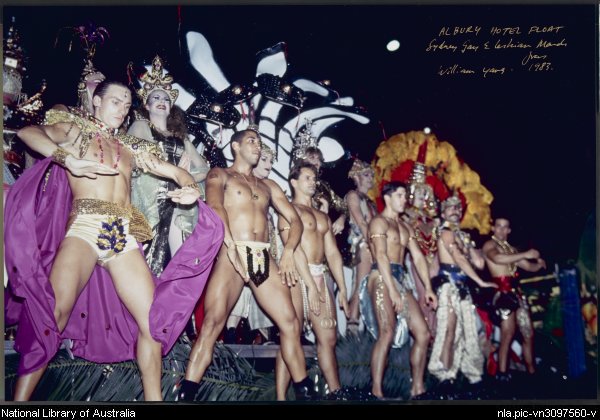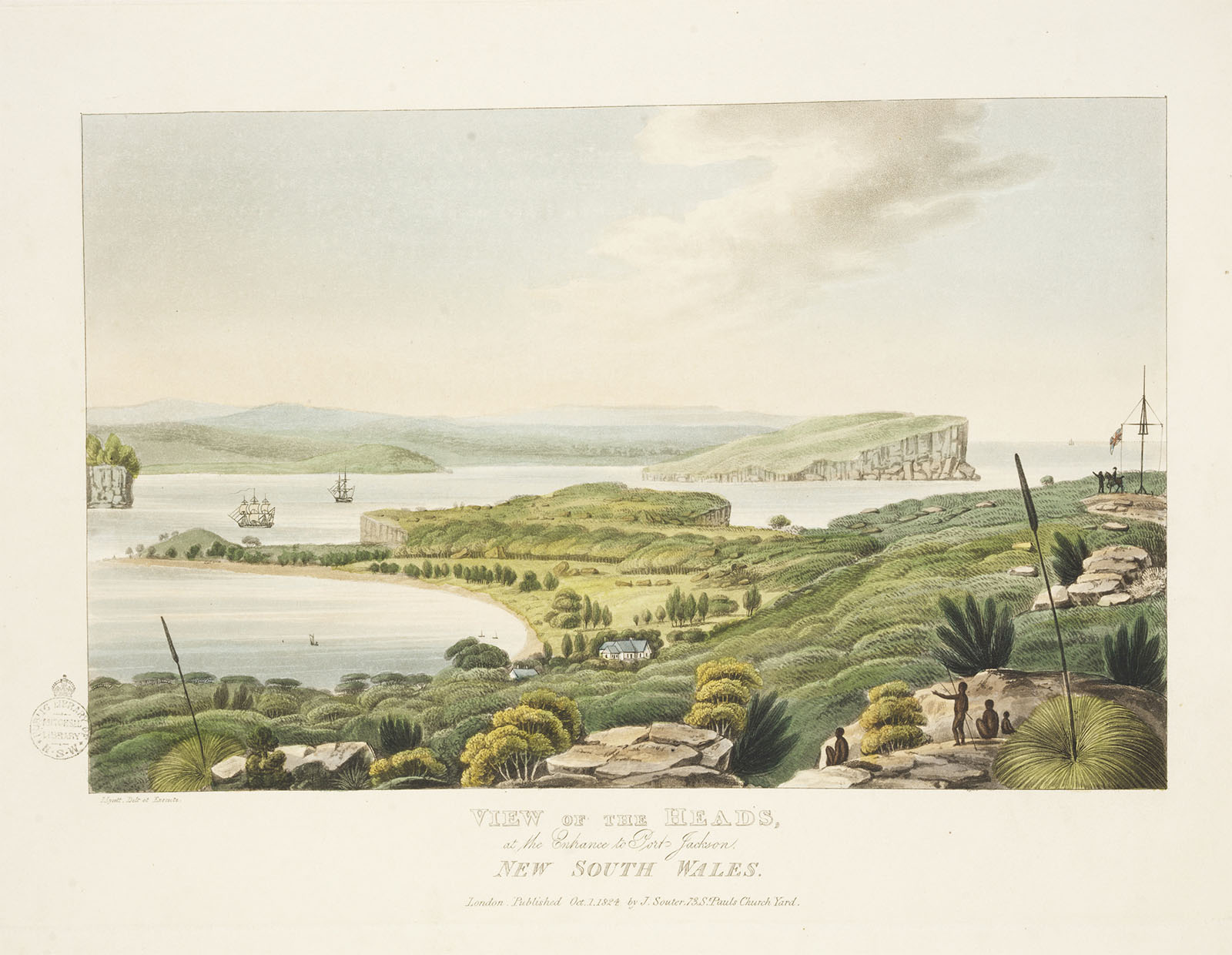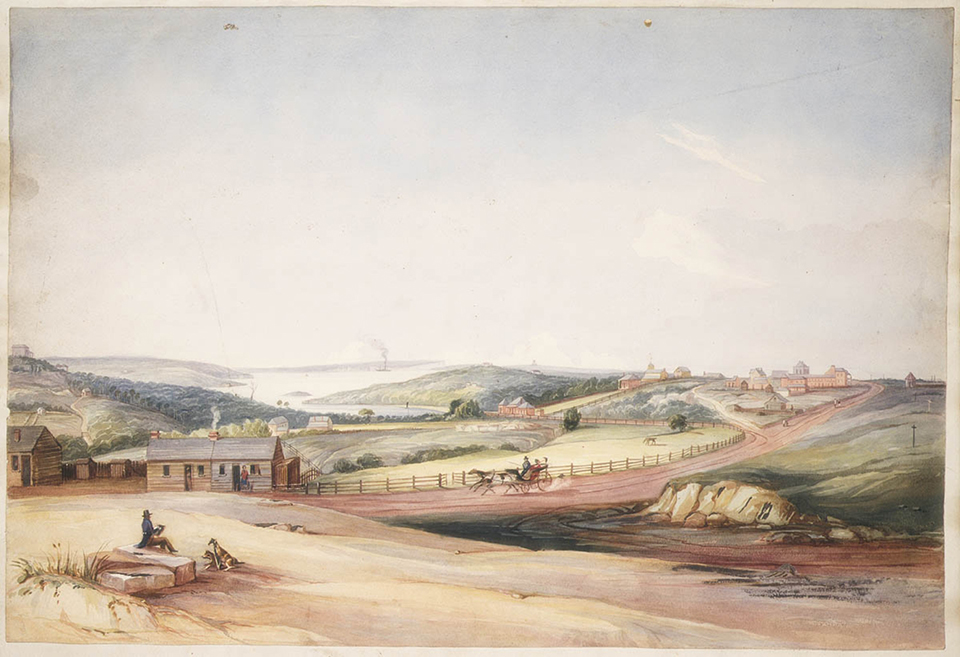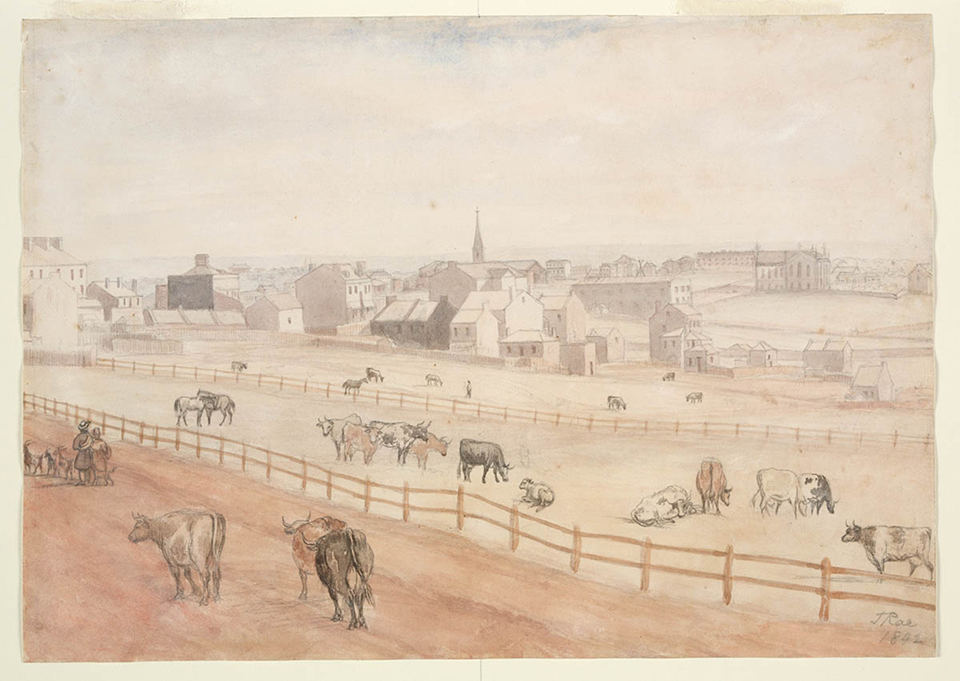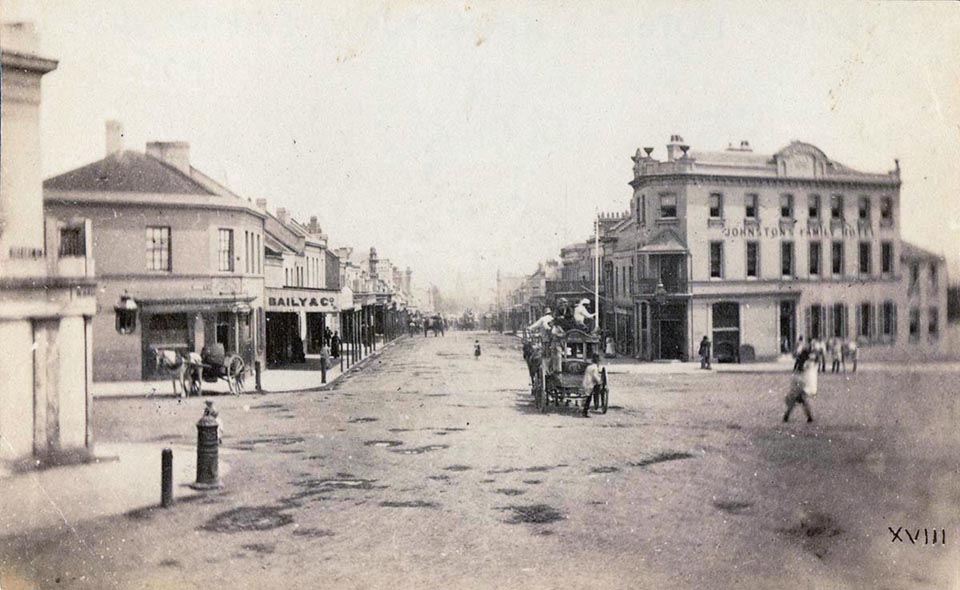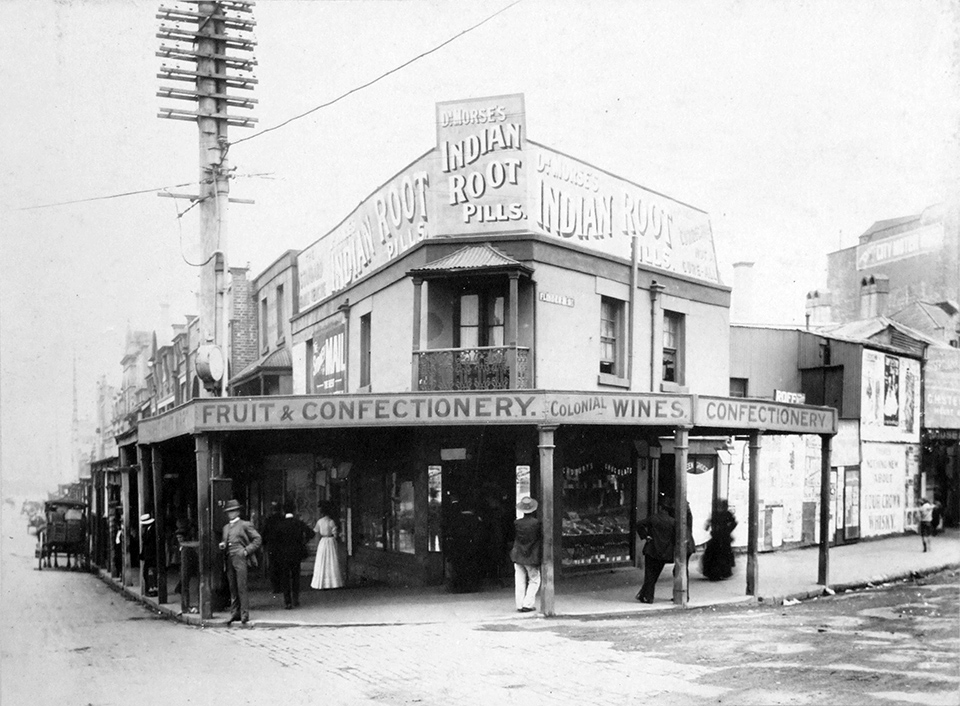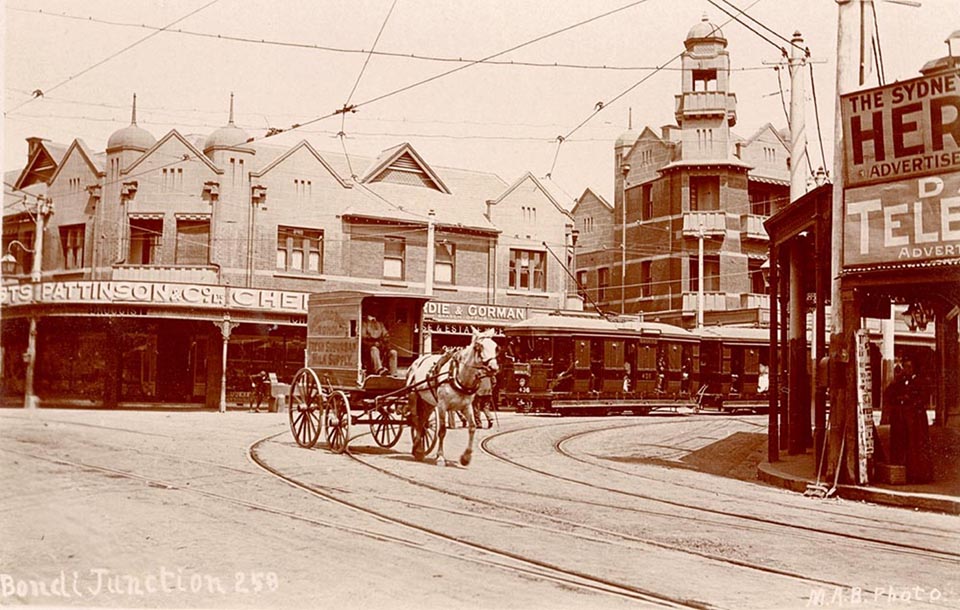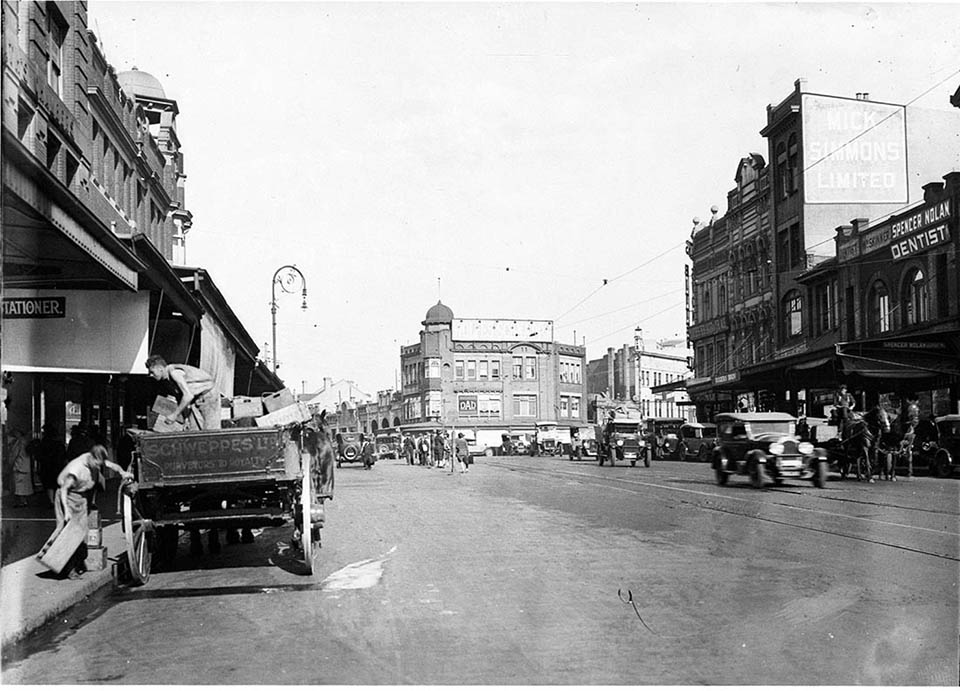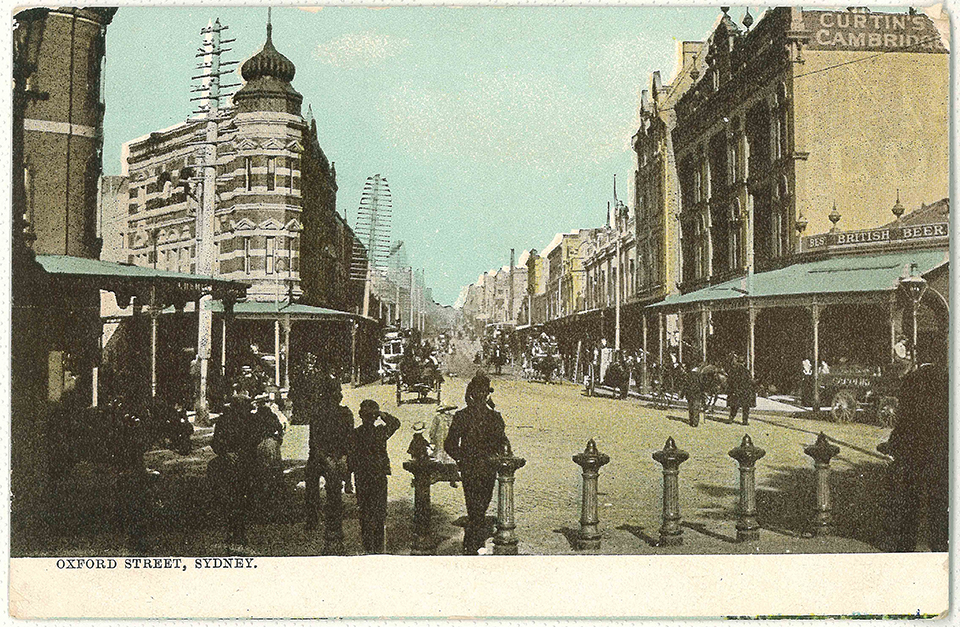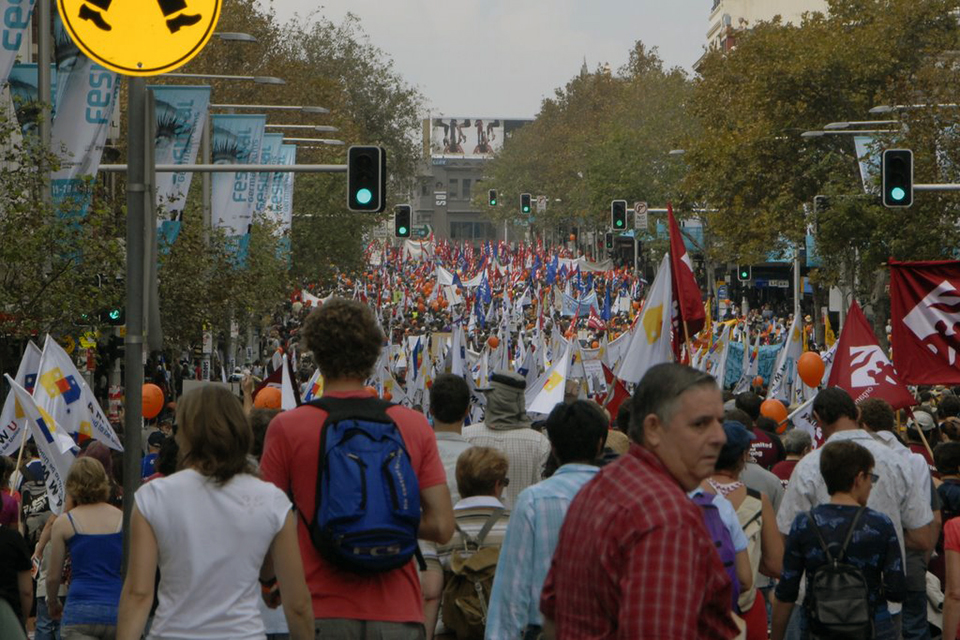The Dictionary of Sydney was archived in 2021.
The road east
Citation
Persistent URL for this entry
To cite this entry in text
To cite this entry in a Wikipedia footnote citation
To cite this entry as a Wikipedia External link
The road east
Oxford Street[media] today is probably most associated in the public mind with the Sydney Gay and Lesbian Mardi Gras Parade, an annual event that draws several hundred thousand spectators to the area, and is seen worldwide by millions of television and Internet viewers. It is a street with a long and colourful history.
In its present form, Oxford Street runs from the south-eastern corner of Hyde Park to Bondi Junction in the east. It is a major gateway to the city's eastern suburbs, and its origins go back to precolonial times.
[media]In 1790, a signal station was established on high ground near South Head, to alert the settlement to approaching ships, but as this was accessible only by boat, a track from Sydney Town to the signal station was cleared by convict labour in 1803, under the supervision of surgeon John Harris, who had tendered to build a 15-foot-wide road for ₤100. This followed a path used by local Aboriginal people and known locally as the Maroo: it went through land that was home to the Cadigal people and possibly also the Biddigal and the Birrabinnagal people. Harris's track followed the ridges or 'high terrain' between the settlement at Sydney Cove and South Head
[media]Under instruction from Governor Macquarie, it was upgraded in 1811 for strategic purposes, making it able to accommodate wheeled vehicles. The South Head Road also became the access road to some of Sydney's salubrious villas built by the colony's emerging plutocracy, at Darlinghurst, Potts Point, Darling Point, and Point Piper, and on the hilltop in what became Paddington. A second road to the South Head – the New South Head Road – was commenced in 1831. This ran closer to the harbour shores and took over this access role, while the old South Head Road was increasingly used for excursions and scenic outings.
The birth of Oxford Street
[media]The building of the Victoria Barracks on the Old South Head Road in Paddington in the 1840s saw gradual suburban infill nearby, and after the gold rushes of the early 1850s, as the Old South Head Road became more built up and commercially focussed, it became an important 'high street'. Reflecting this commercial expansion, its lower section was renamed Oxford Street in 1875, alluding to its London retailing namesake. The new name gradually crept eastward, following suburban expansion out along the horse-bus route, reaching its present terminus at Bondi Junction by 1932. The section from Bondi Junction to South Head still retains the old name.
[media]By the later decades of the nineteenth century, the road gave access to tanneries, breweries, distilleries, building suppliers and clothing factories. Its commerce flourished, with an abundance of banks and retail outlets that included all types of food providores, apothecaries, photographic studios, furniture stores and refreshment rooms.
[media]Lower Oxford Street by the end of the nineteenth century also presented a different demographic from the usual and surrounding Anglo-Celtic one. There was a strong Chinese presence in nearby lower Surry Hills, soon to be joined by Jewish immigrants fleeing the pogroms of eastern Europe and Russia. Greeks and Italians were prominent as food providers, running shops ranging from oyster bars to greengrocers, and most hotels were run by the Irish. Swiss and Germans dominated in precision instrument making and there was a Spanish and Portuguese population selling wines and produce in their bodegas and worshipping at the Sacred Heart Church in Darlinghurst, where masses were held in various languages. [media]All this was set among the increasingly working-class populations of East Sydney and Surry Hills.
Woollahra to Bondi Junction
Further out along the Old South Head Road was Woollahra, by 1871 Sydney's most prestigious suburb, if measured by the number of professional inhabitants and substantial commercial interests. Beyond that was Bondi Junction, or as it was then known, Tea Gardens. Large estates and grand mansions were initially a feature of the eastern suburbs, but as suburbanisation spread along the transport route, Tea Gardens became a busy commercial centre and transport hub, with roads branching off to the coastal areas where a beach culture was emerging.
[media]Initially there was a wide range of industry around Bondi Junction, including an ice works, soap factory, iron foundry and boot factory, but nearly all of these were gone by the mid-twentieth century. Over the years a great variety of leisure businesses operated along Oxford Street – open-air picture theatres and later indoor picture theatres, dance halls, skating rinks, boxing stadiums, snooker halls and a bowling club.
By the early years of the twentieth century, grand department stores had made their appearance on lower Oxford Street. Around Darlinghurst many of the old mansions had been converted into boarding or lodging houses, and the area became home to some of the city's more bohemian elements. New industries continued to appear in the area, including clothing manufacturers supplying the new department stores and shoe stores. [media]Dentists and other health providers began to locate there, because of the proximity of various hospitals in the area – St Vincent's, the Crown Street Women's Hospital, and the Royal Hospital for Women in Paddington.
[media]But eventually the street was a victim of its own success. It became increasingly noisy, polluted and congested. Its role as a major egress to the developing eastern suburbs was intensified with the expanding tram networks, while the suburbs surrounding lower Oxford Street were increasingly seen as slums, blot on the city that should be removed.
Remaking Oxford Street
[media]Town planning ideas led to a dramatic reworking of Oxford Street, and all the buildings on the northern side from Hyde Park to Taylor Square were demolished in stages during the early twentieth century. New buildings were built in a Federation style that gives architectural coherence to this stretch of the street. This process came to a halt with the Depression and World War II. In subsequent decades, with the increasing use of the motor car, came new plans for turning the street into a freeway from the central business district to the beachside suburbs.
[media]These Department of Main Roads plans were a disincentive to any renovation of the Oxford Street shops, and rents in surrounding streets remained low as it was seen as a degraded area. Ironically, cheap rent encouraged migrant families and impecunious students to move into the area, bringing new cultures. Many of the pubs along the street turned to providing entertainment for the newer residents, allowing many bands – Radio Birdman, Cold Chisel, Midnight Oil and others – to appear at venues such as French's Tavern and the Oxford Tavern, and Paddington Town Hall, all on Oxford Street.
But the location close to the city also brought gentrification and a whole new aura to the street and also attracted gay venues, keen to move away from the increasing sleaze of drugs and prostitution at Kings Cross, partly a product of Rest & Recreation leave for US troops from the Vietnam War. The increasing gay presence led to a regeneration of 'the golden mile', as Oxford Street between Hyde Park and Victoria Barracks became known. Rents rose and many of the innovative and interesting small traders who had set up there moved from the street. King Street in Newtown benefited from this exodus.
Today's road east
In 2010, Oxford Street presents varying faces. Leaving the city centre at Hyde Park and travelling east, Oxford Street passes through Darlinghurst, Paddington, Woollahra, and Bondi Junction; as Old South Head Road it continues on through Bellevue Hill and Vaucluse, reaching Watsons Bay and South Head. In the Darlinghurst area, apart from a declining gay presence, it has many run-down or closed shops, while fast food providers and nightclub 'beer barns' spew drunken and aggressive revellers onto the road on weekend mornings. Here, the street is at a nadir, while in Paddington it retains some of its presence as retailer heaven, with boutiques and exclusive shops, and crowds swarming in on weekends for the Paddington markets in the Uniting Church grounds. At its easternmost end, around Bondi Junction, former factory sites have been redeveloped and Victorian terraces and shops have given way to multistorey commercial and residential buildings. Shopfronts contain a range of small stores serving a local market – Korean grocers and eateries, a garden shop, a lighting shop, several electrical repairers and second-hand stores – struggling to compete with the modern but sterile malls of Bondi Junction. The gateway into the city from the east has fallen, once again, on hard times.
Like a sleeping beauty, Oxford Street awaits its next kiss of renewal.
References
Clive Faro and G Wotherspoon, Street Seen: a history of Oxford Street, Melbourne University Press, Melbourne, 2000



